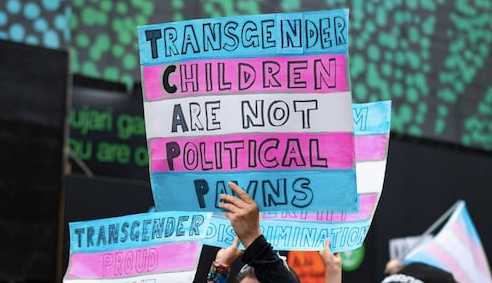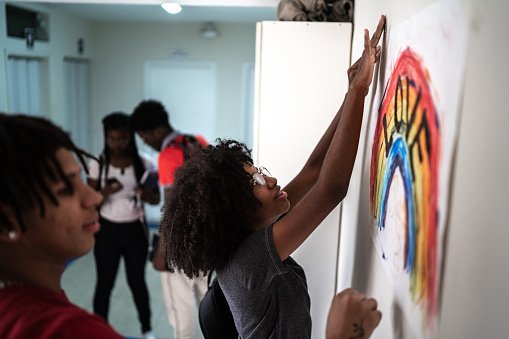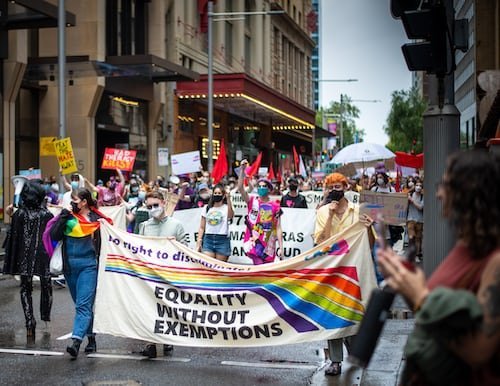Among the many health disparities, a glaring one is the higher rate of mental health disorders in people who identify as part of the LGBTQI+ community. Widespread social and political discrimination have caused disproportionately high rates of poverty, homelessness, and violence in LGBTQI+ individuals, dramatically affecting their mental health. Combatting the discrimination which is detrimental to the mental well being of this community requires the passage of the Equality Act, fostering positive and protective school environments, and making healthcare affordable and accessible.
The disparities between mental health within the LGBTQI+ community compared to their heterosexual counterparts are vast. For example, LGBTQI+ individuals are more than twice as likely to experience mental health disorders in their lifetime compared to heterosexual cisgender men and women (Choukas-Bradley & Thoma, 2022). One of the most concerning statistics is the suicide rate which is four times higher for lesbian, gay, and bisexual individuals than that of heterosexual individuals (Choukas-Bradley & Thoma, 2022). Transgender individuals considered suicide at a rate of 30.8 percent compared to 2.3 percent for cisgender individuals (Choukas-Bradley & Thoma, 2022). The mental health imbalance between the two communities stems from a foundation of discrimination and stigma that in turn leads to anti-LGBTQI+ legislation, higher levels of poverty and homelessness, and increased violence.
A national year-long survey with personal interviews of 1,800 self-identified LGBTQ+ individuals and 1,500 heterosexual individuals to assess discrimination in work, social, and medical scenarios provides evidence of the impact of discrimination on individual mental health (Medina & Mahowald, 2023). Thirty-nine percent of LGBTQI+ had experienced a form of discrimination within the past year compared to 18 percent of non-LGBTQI+, with intersex and transgender individuals experiencing the highest levels of discrimination at 67 percent and 56 percent, respectively (Medina & Mahowald, 2023). Respondents to this survey were also asked to assess the extent this discrimination impacted their overall health. LGBTQI+ respondents reported that their mental health was most impacted; 53 percent reported that it moderately or significantly impacted their mental health (Medina & Mahowald, 2023). These rates were significantly higher for transgender individuals as 78 percent of respondents reported that their mental health was moderately or significantly impacted by discrimination (Medina & Mahowald, 2023). Discrimination sets the foundation for institutionalized homophobic policies, inequalities in medical care, higher poverty levels, and increased violence in the LGBTQI+ community resulting in wide mental health disparities.

State legislators have introduced and passed policies aimed at removing protections for the LGBTQ+ community overwhelmingly targeting transgender adolescents (Meyer, 2015). In 2021, 117 anti-transgeder laws were introduced in state legislatures, skyrocketing from 2015 when 19 were introduced (Choukas-Bradley & Thoma, 2022). Examples of discriminatory policies include denying access to gender affirming care, puberty blockers, and gender preferred restrooms (Baams et al., 2022). Other policies ban transgender individuals from competing in athletic events consistent with their gender identity (Baams et al., 2022). The rise of anti-LGBTQI+ legislation contributes to higher mental health disorders and suicide rates in LGBTQI+ people compared to heterosexual and cisgender individuals (Ancheta et al., 2020).
LGBTQI+ individuals have considerably higher rates of poverty and housing instability due to employment and housing discrimination (Medina & Mahowald, 2023). LGBTQI+ individuals experience discrimination in housing which takes many forms such as: “disparate treatment in renting, selling, pricing, eviction, service provision, homeowner insurance, mortgage lending, and other activities” (Medina & Mahowald, 2023). Homelessness is a major issue for transgender people with one in five experiencing homelessness at some point in their lives (Choukas-Bradley & Thoma, 2022). While experiencing economic and systematic discrimination, LGBTQI+ individuals also experience social ostracization from their family and peers that contribute to their higher levels of poverty and homelessness (Becerra-Culqui et al., 2018). Compared to their peers, LGBTQI+ adolescents experienced less social and financial support from their parents and surrounding community than heterosexual cisgender individuals (Becerra-Culqui et al., 2018). Those experiencing higher unemployment and less housing security reported lower levels of mental well-being (Choukas-Bradley & Thoma, 2022). The combination of discrimination in employment and housing increases vulnerability to mental health disorders in the LGBTQI+ community.
LGBTQI+ individuals are four times more likely to be victims of sexual, verbal, or physical abuse at some point in their lifetimes compared to heterosexual cisgender individuals (Meyer, 2015). There is a direct correlation between being a victim of violence and subsequently developing mental health disorders like PTSD, depression, psychosis, and substance abuse (Choukas-Bradley & Thoma, 2022). Meanwhile, people with mental illnesses are 15 times more likely to experience violence and 23 times more likely to be raped when compared to the general population (Choukas-Bradley & Thoma, 2022). LGBTQI+ individuals experience high rates of violence causing an increase in mental health disorders which further exacerbates the vicious cycle of violence.
Combatting homophobia will consist of a long battle, as changing the perception and attitudes of a huge percentage of people is not a small feat. The most important aspect of helping LGBTQI+ community is by first listening to what they need and providing a platform through which they can share their stories and their agendas (Medina & Mahowald, 2023).
The passage of the Equality Act– a federal law that prohibits discrimination based on sex or gender identity– would be instrumental in lowering mental health disparities within the LGBTQI+ community (Meyer, 2015). This bill provides bans against discrimination in access to education, housing, credit, and employment; and protects individuals from being denied access to a restroom or locker room that is in accordance with their gender identity (Meyer, 2015). Enacting nondiscrimination laws at a federal level offers widespread protections for LGBTQI+ communities and will decrease mental health disorders.

Creating positive school environments, such as adding LGBTQI+ curriculum and school counselors specifically trained to work with LGBTQI+ students, are proven ways to increase the mental well being of LGBTQI+ adolescents (Ancheta et al., 2020). To further protect LGBTQI+ students, schools must add more inclusive anti-bullying policies that explicitly prohibit bullying on the basis of gender or sexual identity (Ancheta et al., 2020). Policies should be implemented that would allow students to change their names on legal documents and school files (Baams et al., 2022). The implementation of training among school personnel would also contribute to feelings of positivity and safety in the school environment (Baams et al., 2022).
To provide adequate care for LGBTQI+ individuals, especially those who have been victims of violence or discrimination, affordable and accessible health care services must be readily available. Expanding Medicare coverage of mental health services and educating the population of these benefits is crucial to getting help for LGBTQI+ individuals suffering from mental health disorders (Baams et al., 2022). In medical settings, there must be protections for gender-affirming healthcare like puberty suppression, gender-affirming hormones, and surgical interventions (Baams et al., 2022). Insurance providers must be required to cover these procedures in addition to mental health services for transgender and gender nonconforming (Baams et al., 2022).
By passing the Equality Act, promoting LGBTQI+-friendly environments in school systems, and expanding access to healthcare to more individuals within these communities, we can begin working towards overcoming the challenges these people face. These steps would be powerful tools in correcting the mental health imbalances between the LGBTQI+ and their heterosexual and cisgender counterparts.

~ Anna Mikel
Hi, I’m Anna Mikel and I currently live in Birmingham, Alabama. I am pursuing my masters in
Medical Social Work with the intent of becoming a Mental Health Professional specializing in
the treatment of minority groups–the LGBTQI+ community, women, and ethnic and racial
minorities. I believe in the healing power of writing and that everyone has an important story to
tell. In my free time, you’ll find me on the lake in my small hometown, playing with my two
nieces, and cuddlings with my dogs.
References
Ancheta, A. J., Bruzzese, J.-M., & Hughes, T. L. (2020). The Impact of Positive School Climate
on Suicidality and Mental Health Among LGBTQ Adolescents: A Systematic Review.
The Journal of School Nursing, 37(2), 105984052097084.
https://doi.org/10.1177/1059840520970847
Baams, L., Mcguire, J., Olson, K., & Toomey, R. (2022). Gender-Affirming Policies Support
Transgender and Gender Diverse Youth’s Health. Society for Research in Child
Development.
Becerra-Culqui, T., Liu, Y., Nash, R., Cromwell, L., Flanders, W. D., Getahun, D., Giammattei,
S. V., Hunkeler, E. M., Lash, T. L., Millman, A., Quinn, V. P., Robinson, B., Roblin, D.,
Sandberg, D. E., Silverberg, M. J., Tangpricha, V., & Goodman, M. (2018). Mental
Health of Transgender and Gender Nonconforming Youth Compared With Their Peers.
Pediatrics, 141(5), e20173845. https://doi.org/10.1542/peds.2017-3845
Choukas-Bradley, S., & Thoma, B. C. (2022). Mental Health Among LGBT Youth. Gender and
Sexuality Development, 539–565. https://doi.org/10.1007/978-3-030-84273-4_18
Medina, C., & Mahowald, L. (2023). Discrimination and Barriers to Well-Being: The State of the
LGBTQI+ Community in 2022. Center for American Progress.
Meyer, D. (2015). Violence Against Queer People: Race, Class, Gender, and the Persistence of
Anti-LGBT Discrimination. Rutgers University Press.
Pictures from istockphotos

